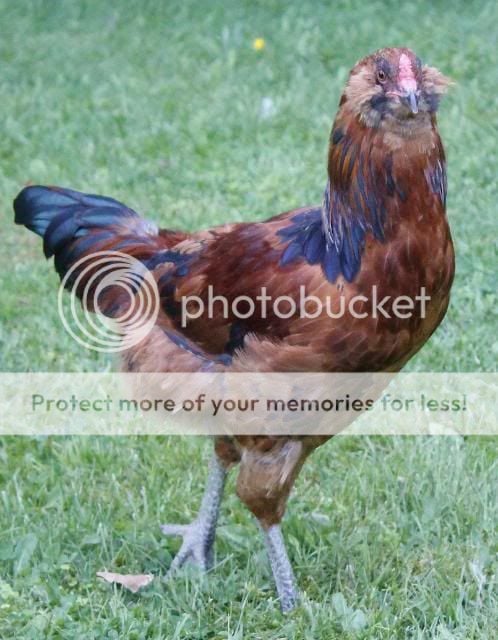Ameraucanas DO lay "blue" eggs but "blue" can be subjective. Some blues may be a bit greener or paler than others. Ameraucanas must meet the breed description including colours (feathers, beaks, legs, skin, ear lobes, eyes, eggs, etc.), pea comb, muffs and beard, clean legs, etc. And they must breed true. So in order to really be sure the bird in question is an Ameraucana one should know who the parents are and what hatches in addition to observing the bird in question.
One slight correction to the above and that is "eggs" should be scratched from the list with regard to "colours". Someone mentioned several pages ago that Ameraucanas can lay a white egg and that is true. I know because I have some that do and this was by design a specific purpose. To wit, egg production. It's a long story and if anyone is interested they can do a search on this thread as I wrote about it extensively.
I only breed and show the WBS variety, I keep meticulous records, linebreed, and have maintained a closed flock. So when I say I "know", I mean there is NO chance that my white egg layers are anything but true Ameraucanas.
As for green, most of us have dealt with that issue as brown egg gene modifiers are all over the Ameraucana gene pool and from what I'm read, I'm not sure anyone even knows how they work yet. If I remember right, the Buffs still have a problem with green eggs. In general, egg color is a work in progress for most of us Ameraucana breeders. Along with my birds laying white eggs, I also got the bluest egg this year that I think I've ever seen in any of my birds. So I'm pretty anxious to get back home and see who is doing what.
Since I'm not at home, I don't have access to my SOP but, again, the actually wording was posted some time back on this thread. For now I'll just say that Ameraucanas should lay a blue egg but it's not mandatory and it's not something that the bird is judged on. Since I don't have the SOP in front of me and I don't have it memorized yet, I'm not even sure if muffs and/or beard is a DQ or just a fault. Breeding true is MUCH more important. Just to drive the point home, I believe it was Walt (who's a judge) replied to someone's post saying something like, "And just how long am I required to stand by the cage and wait for the egg?"
God Bless,










